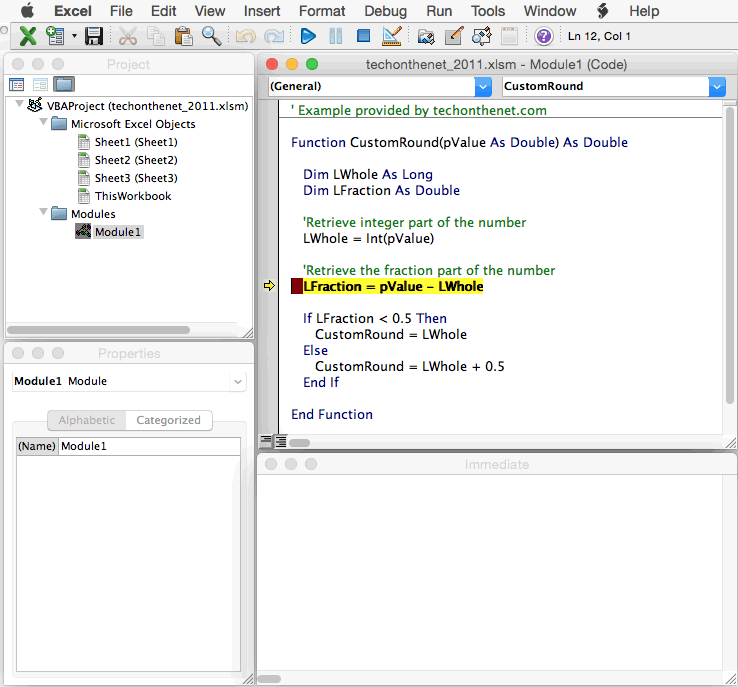Vba Macro In Excel 2016 For Mac
Excel for Office 365 for Mac Excel 2019 for Mac Excel 2016 for Mac To automate a repetitive task so that you can do the task again with a single click, you can use the Developer tab in Excel for Mac to record and run a macro. Conference call omni for mac pro. You can also create a macro by using the Visual Basic Editor in Microsoft Visual Basic for Applications (VBA) to write your own macro programming code. If you no longer use a macro, you can delete it. Record a macro When you record a macro, the macro recorder records all the steps required to complete the actions that you want your macro to perform. These steps can include typing text or numbers, clicking cells or commands on the ribbon or on menus, formatting, selecting cells, rows, or columns, and dragging your mouse to select cells on your spreadsheet.
The commands for recording, creating, and deleting macros are available on the Developer tab on the Ribbon. If the Developer tab is not available, do the following to display it:. Select Excel Preferences Ribbon & Toolbar. Under Customize the Ribbon, select Main Tabs and then check Developer. Click Save and then close Excel Preferences. On the Developer tab, click Record Macro.
Note: To create a macro from VBE, click Visual Basic. In the code window of the module, type the macro code that you want to use. In the Macro name box, enter a name for the macro. The first character of the macro name must be a letter. Subsequent characters can be letters, numbers, or underscore characters. Spaces cannot be used in a macro name; an underscore character works well as a word separator. If you use a macro name that is also a cell reference, you may get an error message that the macro name is not valid.
Vba Macro In Excel 2016 For Mac Free

In the Store macro in list, select This Workbook. In the Shortcut key box, type any lowercase letter or uppercase letter that you want to use.
Note Outlook for Mac and OneNote for Mac do not support VBA. Office 2016 for Mac is sandboxed Unlike other versions of Office apps that support VBA, Office 2016 for Mac apps are sandboxed. Sandboxing restricts the apps from accessing resources outside the app container. This affects any add-ins or macros that involve file access or communication across processes. You can minimize the effects of sandboxing by using the new commands described in the following section.
Creating an installer or putting user content For instructions on creating an installer for your add-in, please refer to the article here: New VBA commands for Office 2016 for Mac The following VBA commands are new and unique to Office 2016 for Mac. Command Use to Request a user's permission to access multiple files at once. Call external AppleScript scripts from VB. IFDEF between different Mac Office versions at compile time. Ribbon customization in Office for Mac Office 2016 for Mac supports ribbon customization using Ribbon XML.
Note that there are some differences in ribbon support in Office 2016 for Mac and Office for Windows. Ribbon customization feature Office for Windows Office for Mac Ability to customize the ribbon using Ribbon XML Available Available Support for document based add-ins Available Available Ability to invoke Macros using custom ribbon controls Available Available Customization of custom menus Available Available Ability to include and invoke Office Fluent Controls within a custom ribbon tab Available Most familiar Office Fluent Control Identifiers are compatible with Office for Mac. Some might not be available.
For commands that are compatible with Office 2016 for Mac, see. Support for COM add-ins that use custom ribbon controls Available Office 2016 for Mac doesn't support third-party COM add-ins.
Download Excel 2016 Vba Documentation
IdMSOs compatible with Office 2016 for Mac For information about the idMSOs that are compatible with Office 2016 for Mac, see the following:. Feedback.